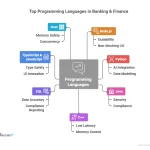
Let’s be honest—trading low-liquidity currency pairs is like navigating a backroad instead of a highway. Fewer traders, wider spreads, and sudden price swings can make it feel unpredictable. But with the right strategies, these pairs can offer unique opportunities. Here’s the deal: you’ll need patience, precision, and a solid game plan.
Understanding Low-Liquidity Currency Pairs
First things first. Low-liquidity pairs—think USD/TRY (U.S. Dollar/Turkish Lira) or USD/ZAR (U.S. Dollar/South African Rand)—don’t trade as frequently as majors like EUR/USD. That means:
- Wider spreads: Brokers compensate for risk with higher costs.
- Volatility spikes: News or economic shifts hit harder.
- Slippage risks: Orders might fill at unexpected prices.
But here’s the twist: less competition can mean bigger rewards if you play it smart.
Strategy #1: The Range-Bound Approach
Low-liquidity pairs often move sideways for long stretches. Instead of fighting the trend, trade the range:
- Identify clear support/resistance levels (historical price floors/ceilings).
- Buy near support, sell near resistance—rinse and repeat.
- Use tight stop-losses to dodge false breakouts.
Pro tip: Combine this with volume indicators like OBV (On-Balance Volume) to confirm reversals.
Strategy #2: News Trading with Caution
Economic reports can send these pairs into overdrive. But—and this is key—you’ll need to:
- Pre-check the calendar: Know when major announcements (e.g., interest rates) drop.
- Wait 5-10 minutes post-news: Let the initial frenzy settle.
- Trade retracements: Fade extreme moves once liquidity returns.
Example: If USD/SGD spikes on U.S. jobs data, watch for a pullback before entering.
Strategy #3: The “Quiet Hours” Scalp
Low-liquidity pairs often drift during off-hours (like Asian sessions for exotic pairs). Here’s how to scalp small gains:
- Trade during low-volatility windows (avoid overlaps like London/New York).
- Aim for 10-15 pips max—greed kills here.
- Stick to one or two pairs to avoid overtrading.
Warning: Spreads widen further during these times, so factor that into targets.
Risk Management: Non-Negotiables
No strategy works without guarding your capital. Period.
- 1-2% rule: Risk only 1-2% of your account per trade.
- Wider stops: Give trades room to breathe—false breakouts are common.
- Avoid leverage: 5:1 max. These pairs move fast; don’t amplify the pain.
Final Thought: Patience Pays
Trading low-liquidity pairs isn’t for the impulsive. It’s a slow dance—wait for your music, step in, and know when to exit. The traders who thrive here? They’re the ones who treat it like a marathon, not a sprint.






